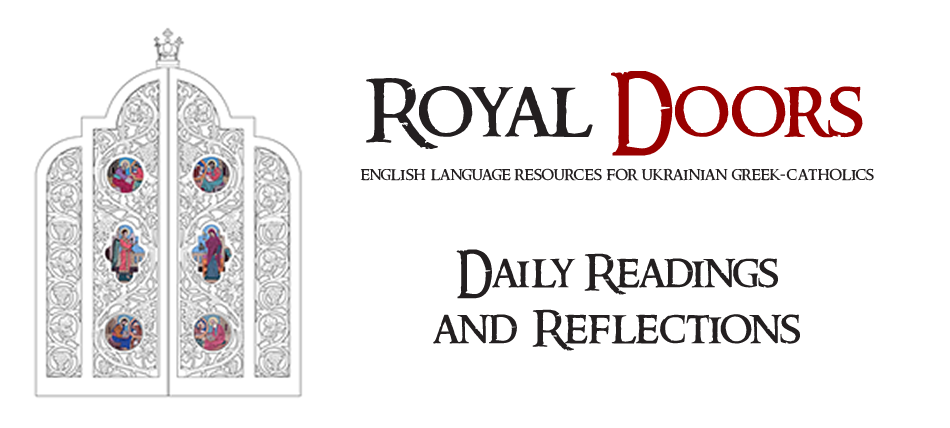by Brent Kostyniuk
The notion of Both Lungs is about understanding each other, sharing, and learning. Although we are distinctly East and West, each with our own expressions of worship and theology, there is far more which unites us than separates us. One area of commonality is feast days and devotions. Many saints are recognized in both the East and West. St. Nicholas immediately comes to mind. Most notably, however, we all show our devotion to the Mother of God.
In both East and West, the months of May and October are set aside on her honour. In the West, this tradition stems from the Feast of Our Lady of the Rosary on October 7. The feast commemorates the Battle of Lepanto which took place in October 1571. The Battle was the climax of a war against invading Muslims. As the situation became more and more desperate, Pope Pius V called Catholics throughout Europe to pray the rosary asking Mary to intercede for a Christian victory. A decisive naval battle took place on the first Sunday of October 1571. The far-outnumbered Christian fleet met the invading Muslims off the coast of Greece in the Gulf of Lepanto. By the end of the day, almost all the enemy had been driven to shore or drowned. Europe was saved. Soon afterwards Pope Pius’ successor, Gregory XIII, decreed that the first Sunday in October would be the feast of the Holy Rosary.
In the East, October 1 is one of the most beloved of all feast days, the Protection of the Mother of God. This feast pays honour to a miraculous intervention. According to the ancient chronicles of Nestor, the inhabitants of Constantinople prayed that the Mother of God would protect them from an attack by a large Rus’ (the early Slavic nation) army at a time when Rus’ was still pagan. Nestor suggests this took place sometime in the ninth century.
Tradition recalls the story of how Mary the Theotokos appeared to St. Andrew the Fool for Christ inside Blachernae church in Constantinople (modern day Istanbul). Early in the morning of Sunday, October 1, St. Andrew saw the dome of the church open and Mary enter, floating in the air above him, surrounded by angels and saints. St. Andrew saw Mary kneel and pray for all faithful Christians throughout the world. She also asked her Son, Jesus, to accept the prayers of all those who turned to Him for protection through her intercession. After, Mary rose and spread her veil over all the people in the church as a sign of her protection.
St Andrew turned to his disciple, St. Epiphanius, who was standing near him, and asked, “Do you see, brother, the Holy Theotokos, praying for all the world?” Epiphanius answered, “Yes, holy father, I see it and am amazed!”
Following the appearance of the Mother of God, the invading enemy was thwarted and the city spared disaster.
The name of the feast—Protection—is a translation of the Ukrainian word, pokrov. However, “protection” does not convey the full significance of pokrov, which has several meanings. First, of all, it refers to a cloak or shroud; it also means protection or intercession. For this reason, the name of the feast is also translated as the Veil of Our Lady, the Protecting Veil of the Theotokos, or the Intercession of the Theotokos. Indeed, it would take a rather long English language sentence to express the full meaning. We are given the mental image of a caring and loving mother, spreading her cloak to shelter her children from harm. It is an image to which any child can relate.
For those who might think these feasts have no relevance today, they are mistaken. In recent years, the Feast of the Protection has become associated with thanksgiving for the deliverance of the Greek nation from the Italian invasion of 1940. These events are commemorated in Greece in a national holiday known as “Ochi Day” or “No Day,” referring to the response of the Greek leader Metaxas to Mussolini’s ultimatum for surrender.
In Byzantine iconography, the Mother of God is most often depicted with her Son, our Lord. Commonly, she is holding Him as any loving mother would. In other icons, she appears alone, interceding before Jesus on our behalf. As early as the third century, Christians were turning to the Theotokos, as evidenced in this Coptic prayer of that time. “Under your protection we seek refuge, holy Mother of God.” In various icons we see her with the palms of her hands turned upwards towards heaven. In icons of the Protecting Veil, she retains this pose, while holding her veil or prokov spread between her outstretched arms, even as she did for the people of Constantinople.
On the Feast of the Protection, like those ancient Christians, we once again pray to the Theotokos for her motherly intercession, in the Kontakion.
Today the Virgin stands in the midst of the Church, and with choirs of saints she invisibly prays to God for us. Angels and bishops worship, apostles and prophets rejoice together, since for our sake she prays to the pre-eternal God.
This piece first appeared in The Prairie Messenger. Reprinted with permission.


